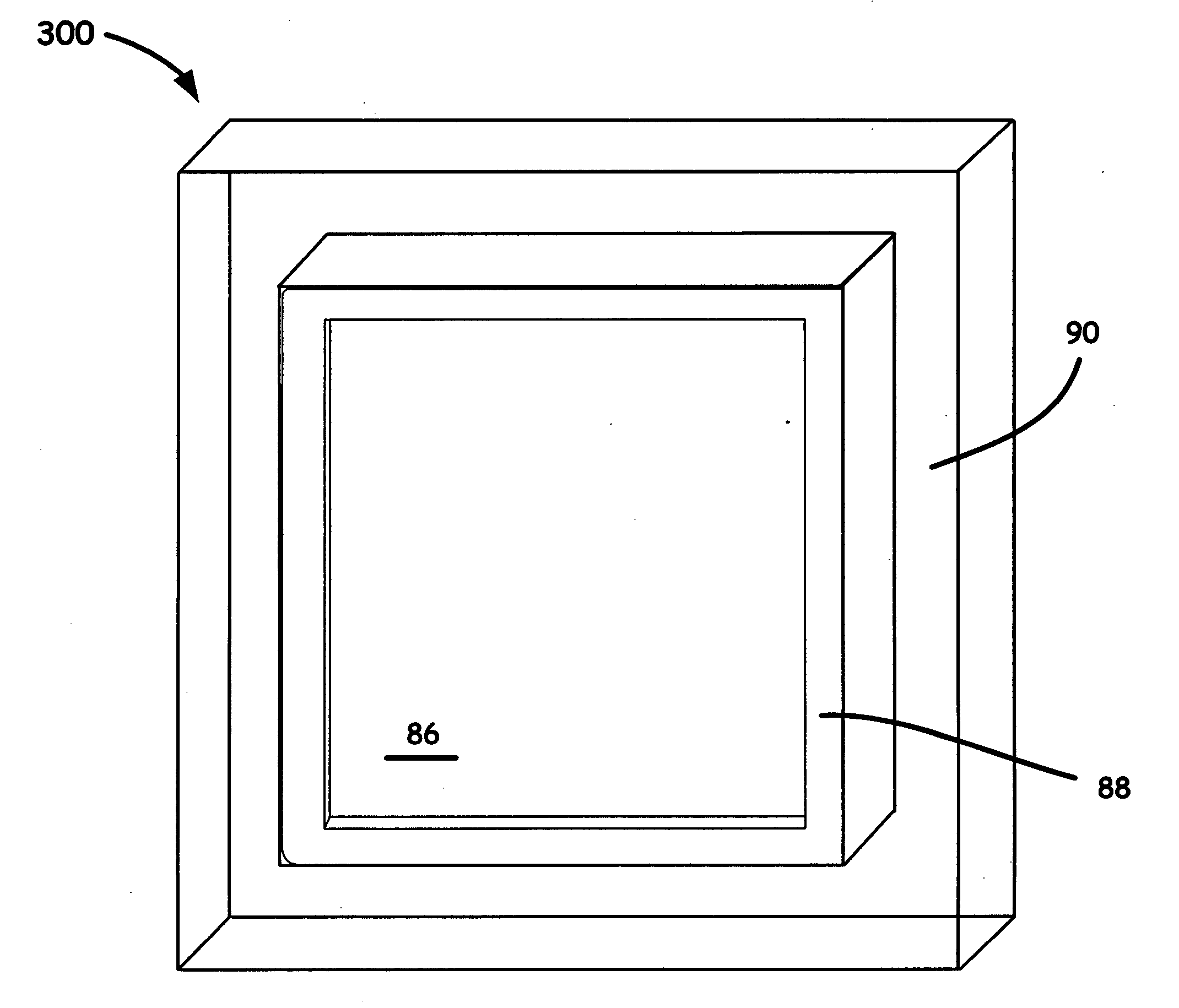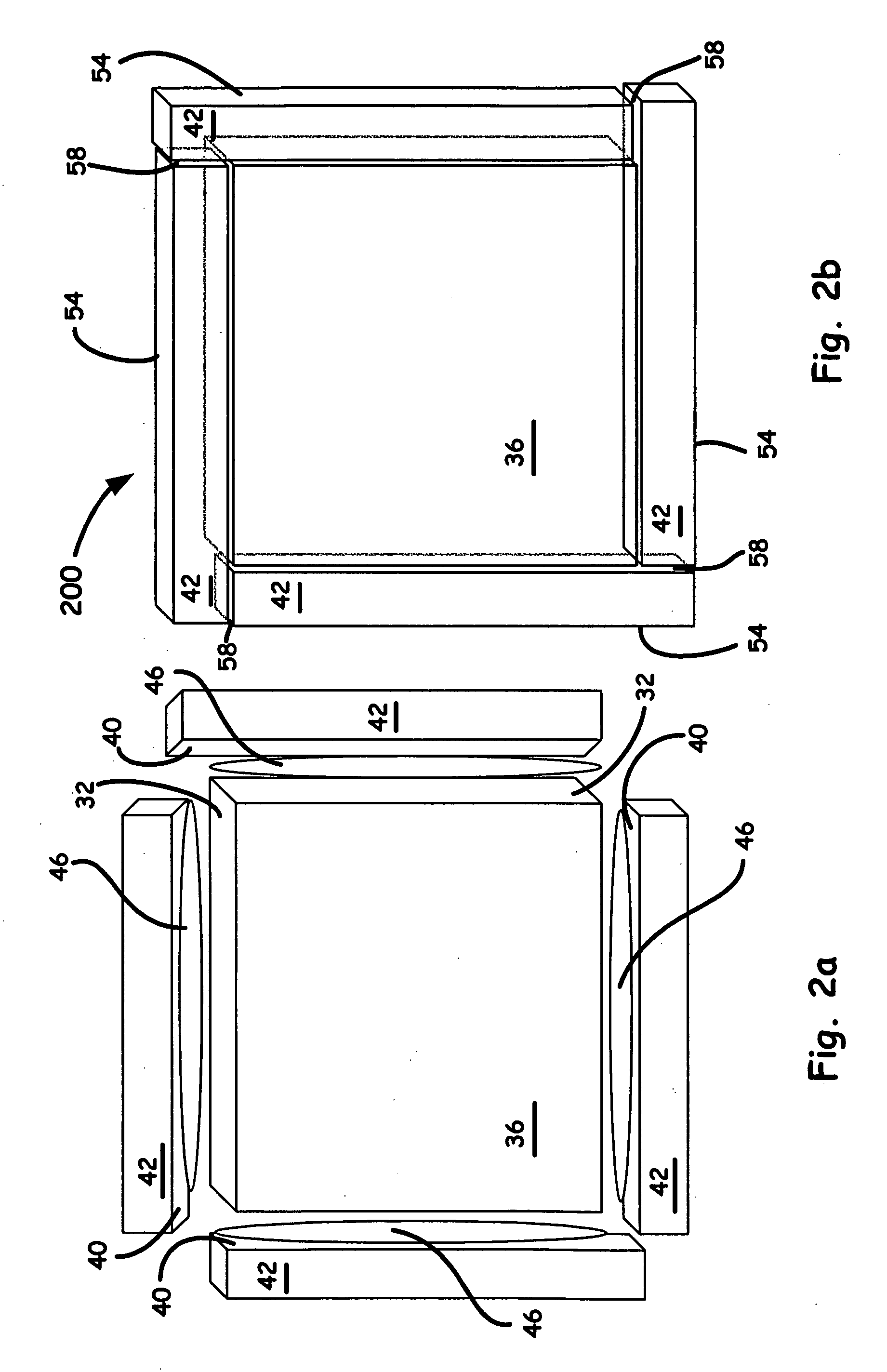Gain media edge treatment to suppress amplified spontaneous emission in a high power laser
a high-power laser and amplifier technology, applied in lasers, laser details, active medium materials, etc., can solve the problems of reducing affecting the efficiency of lasers, so as to minimize thermally induced stresses
- Summary
- Abstract
- Description
- Claims
- Application Information
AI Technical Summary
Benefits of technology
Problems solved by technology
Method used
Image
Examples
example i
[0039] In the first example embodiment, the roughened edge surfaces of a slab or disk amplifier are bonded to the ASE and / or parasitic oscillation and / or pump energy cladding material which may or may not be roughened but which can have an index of refraction greater than that of an epoxy so as to avoid total internal reflection at the epoxy cladding boundary. In addition, such a cladding material can be designed to have a thermal coefficient of expansion substantially matched with the laser gain media between about + or −5%. It is most desired that the index of refraction of such an absorber is the same as the epoxy. Beneficial absorbers that have been utilized in the practice of the present invention are Co:GGG (n=1.94) and KG3 (n=1.54). KG3 is an infrared absorbing glass made by Schott, Inc. but since its index of refraction is less than that of the epoxy it can result in clamping earlier than with GGG. Co:GGG is more beneficial than KG3 because such an absorber is relatively tra...
example ii
[0052] A “moat” of high index epoxy having an index of refraction greater than about 1.5, often greater than about 1.6, more often greater than about 1.7, and even more often having an index of refraction between about 1.6 and about 2.0, can be arranged by pouring epoxy into a gap from about 1 millimeter up to about 10 millimeters between a slab or disk and a frame, such as, for example, a metal frame constructed to absorb the ASE. Epoxy of the present invention is designed to thermally and mechanically isolate slab from an ASE absorbing material and allows a frame to be made of a metal material, such as blackened copper, which strongly absorbs the ASE on its surface. By making the absorbing material out of a metal coating, heat can be rapidly removed from the surface by the metal. The metal is “blackened” by oxidizing the metal. The index of refraction change at the surface is from a low index to a high index so as to avoid ASE reflection back into the epoxy and amplifier slab. Uti...
PUM
 Login to View More
Login to View More Abstract
Description
Claims
Application Information
 Login to View More
Login to View More - R&D
- Intellectual Property
- Life Sciences
- Materials
- Tech Scout
- Unparalleled Data Quality
- Higher Quality Content
- 60% Fewer Hallucinations
Browse by: Latest US Patents, China's latest patents, Technical Efficacy Thesaurus, Application Domain, Technology Topic, Popular Technical Reports.
© 2025 PatSnap. All rights reserved.Legal|Privacy policy|Modern Slavery Act Transparency Statement|Sitemap|About US| Contact US: help@patsnap.com



